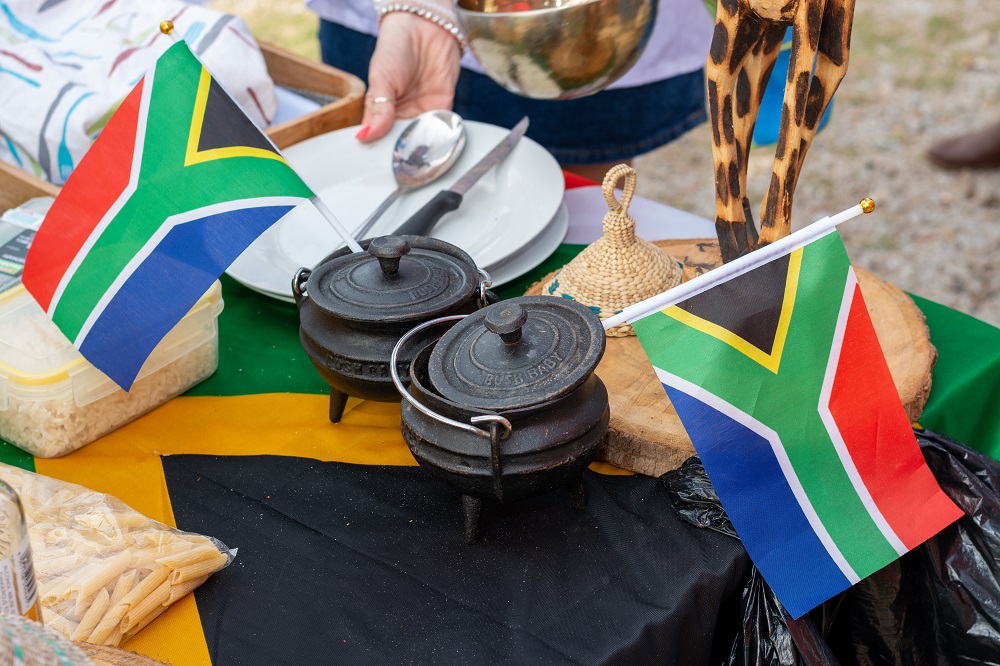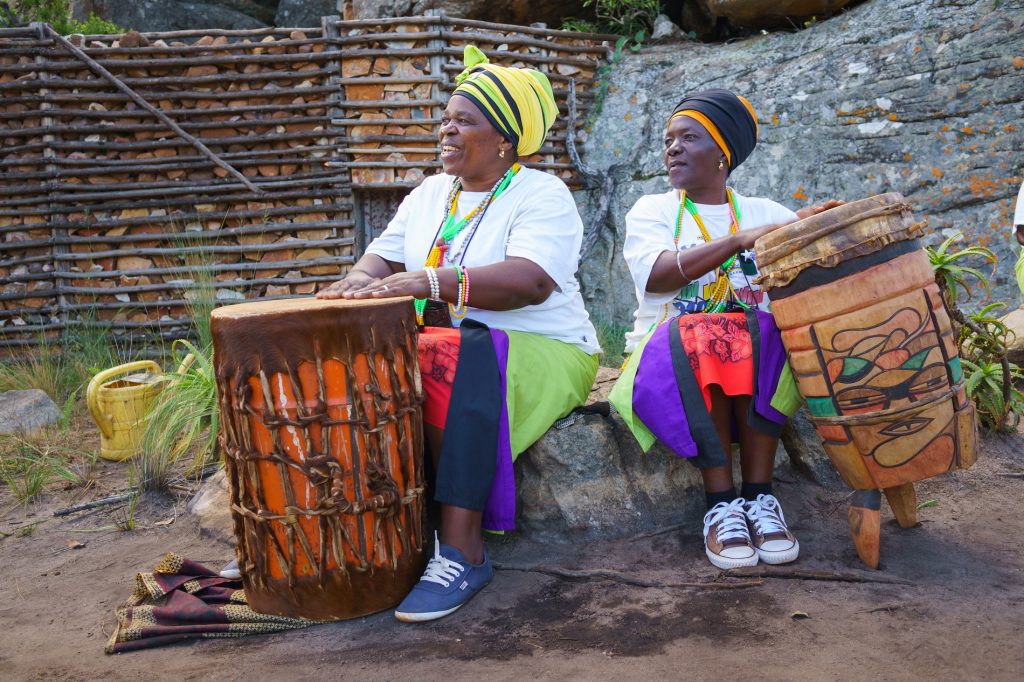Not known Facts About South African Culture Today
Not known Facts About South African Culture Today
Blog Article
The Basic Principles Of South African Culture Today
Table of ContentsSome Known Facts About South African Culture Today.South African Culture Today Can Be Fun For EveryoneExamine This Report about South African Culture TodayThe South African Culture Today StatementsFacts About South African Culture Today UncoveredSouth African Culture Today Fundamentals Explained
This adheres to with vocal singing and drum pounding. The bride and groom then fulfill with the senior citizens and discuss the relevance of their union. A matter of relevance in Zambian towns is the diing of enjoyed ones. All participants of the town placed cash, effort and time together for the burial of the deceased.During the grieving duration; males remain outside the home and the females remain inside the house of the deceased. After speaking concerning the dead, the town walks to the place of burial to state their last farewells. Music and dancing is a very essential element of the Zambian society. The numerous tribal devices have their very own dancing kinds; however, makishi is common amongst all tribes.
Some Known Questions About South African Culture Today.
When it pertains to music, drums are made use of the most, with a variety of drumming events. In Zambia, majority of individuals are Christian; Protestant and Roman Catholic. There are small groups of Muslims and Hindus, with the rest adhering to local indigenous tribal beliefs.

South African heritage and society is tremendously varied, and includes several teams of individuals who each have their own customs and beliefs. Having such a diversity of people and cultures is what makes South Africa so special. In real feeling of the expression, we are a rainbow country.
Making it the 7th on the listing of nations with the most Portuguese individuals in it outside of Portugal. Portuguese is not only a culture, however it is likewise a language and a citizenship. Portuguese people stem from the nation of Portugal in Europe, nevertheless, due to Portugal (like numerous other nations in Europe) checking out the world and conquering various other countries during the 15th 20th centuries, South Africa has what we call Portuguese South African's living in it.
The smart Trick of South African Culture Today That Nobody is Discussing
Among the noticeable functions of the topography is a plateau that covers almost 2 thirds of the facility of the country. The plateau facility rises towards the southeast, where it climaxes in the Drakensberg variety, component of an escarpment that divides the plateau from the seaside areas. The Drakensburg consists of Champagne Castle, the greatest peak in the country.
The area north of the Witwatersrand, called the bushveld, slopes downward from eastern to west towards the Limpopo River, which develops the international border. The western section of the plateau, the middleveld, additionally comes down towards the west and differs in elevation in between the highveld and bushveld. Between the Drakensburg and the eastern and southern coastline, the land descends to the sea.
Nearer the shore there is a low-lying plain called the eastern lowveld. Southwest of the plateau the country comes to be progressively a lot more dry, paving the way to the hostile desert of the Great Karroo, approached the east by the lower, much better sprinkled plateau of the Little Karroo. Separating the dry southern inside from the sandy coastal of the southerly coast and West Cape is one more array, the Langeberg.
Some Known Details About South African Culture Today
The country's racially, ethnically, and politically separated background has created national and subnational symbols that still function as symbols of the country, and others icons that are approved just by specific groups. The monuments to white settler occupation and political dominance, such as the Afrikaner Voortrekker ("pioneer") Monolith in Pretoria and the Rhodes Monument recognizing the British colonial realm building contractor and Cape prime minister Cecil Rhodes, remain sectarian symbols.
The initial modern-day inhabitants were the San ("bushman") hunter-gatherers you could try these out and the Khoi ("Hottentot") peoples, who rounded up animals (South African culture today). The San might have existed for countless years and left evidence of their visibility in hundreds of ancient cave paints ("rock art"). Bantu-speaking clans that were the forefathers of the Nguni (today's amaZulu, amaXhosa, amaSwazi, and vaTsonga peoples) and Tswana-Sotho language teams (today's Batswana and Southern and Northern Basotho) moved down from east Africa as very early as the fifteenth century

The 2 former republics of the Orange Free State and Transvaal (South African Republic) were established by Afrikaner inhabitants who beat and dispossessed the Basotho and Batswana. Lesotho would certainly have been forcibly integrated right into the Orange Free State without the extension of British security in 1869. The ultimate unification of the nation arised from the South African War (18991902) in between the British and both Afrikaner republics, which decreased the nation to ruin at the beginning of the twentieth century.
Afrikaners traditionally considered themselves the just true South Africans and, while giving complete citizenship to all residents of European descent, denied that condition to individuals of shade until the democratic shift of 1994. British South Africans keep a sense of cultural and social connection to Great Britain without compromising their identification as South Africans.
The Only Guide for South African Culture Today
The diversity and fragmentation within ethnic collections and the balance of tensions between those groups throughout the twentieth century prevented interethnic civil conflict. While intergroup stress over sources, privileges, and political supremacy stay, those disputes are as likely to pit Zulu versus Zulu as Zulu versus Xhosa or African versus Afrikaner.
From colonial India, British vendors and administrators brought the curved metal decorative roof coverings and slim shoelace work pillars that still represent he has a good point the verandas of cottages in the areas and cities throughout the country. Holy places contribute a vital building element even in the smallest towns. Along with the skyrocketing steeples and classic stonework of Afrikaans Dutch Reformed churches, Anglican churches, synagogues, mosques, and Hindu temples give range to the religious building scene.

Slaughtering and the brewing of typical cereal beer are necessary in securing the involvement and a good reputation of the ancestors who are taken into consideration the guardians of good ton of money, success, and well-being. Indian neighborhoods keep their indigenous culinary customs and use them on Islamic and Hindu ritual and ceremonial celebrations. Afrikaners and Coloured individuals collect at weekend breaks and unique events at multifamily barbecues called braais, where community bonds are enhanced.
Since this was the main economic enterprise of both black Africans and white homesteaders, problem between those groups fixated the ownership of grazing land and livestock. In 1867, the biggest diamond deposits worldwide were found at Kimberley in the west central location. The riches from those fields helped fund the exploitation of the best gold coral reef on the planet, which was uncovered on the Witwatersrand in 1886.
South African Culture Today Things To Know Before You Buy
This caused misconceptions and intentional misrepresentation in the transactions of white settlers and federal government authorities with African chiefs during the early american duration (South African culture today). In the facility of African reserves, some facets of communal and chiefly "tribal depend on" land period were protected, and even in white backwoods, forms of communal period were still exercised in areas with African communities
After the autonomous improvement of 1994, programs for land restitution, redistribution, and reform were instituted, but progression has been slow. The white minority still regulates eighty percent of the land. In the wake of farming land invasions in Zimbabwe, the Department of visit Land Matters has vowed to speed land redistribution.
Report this page